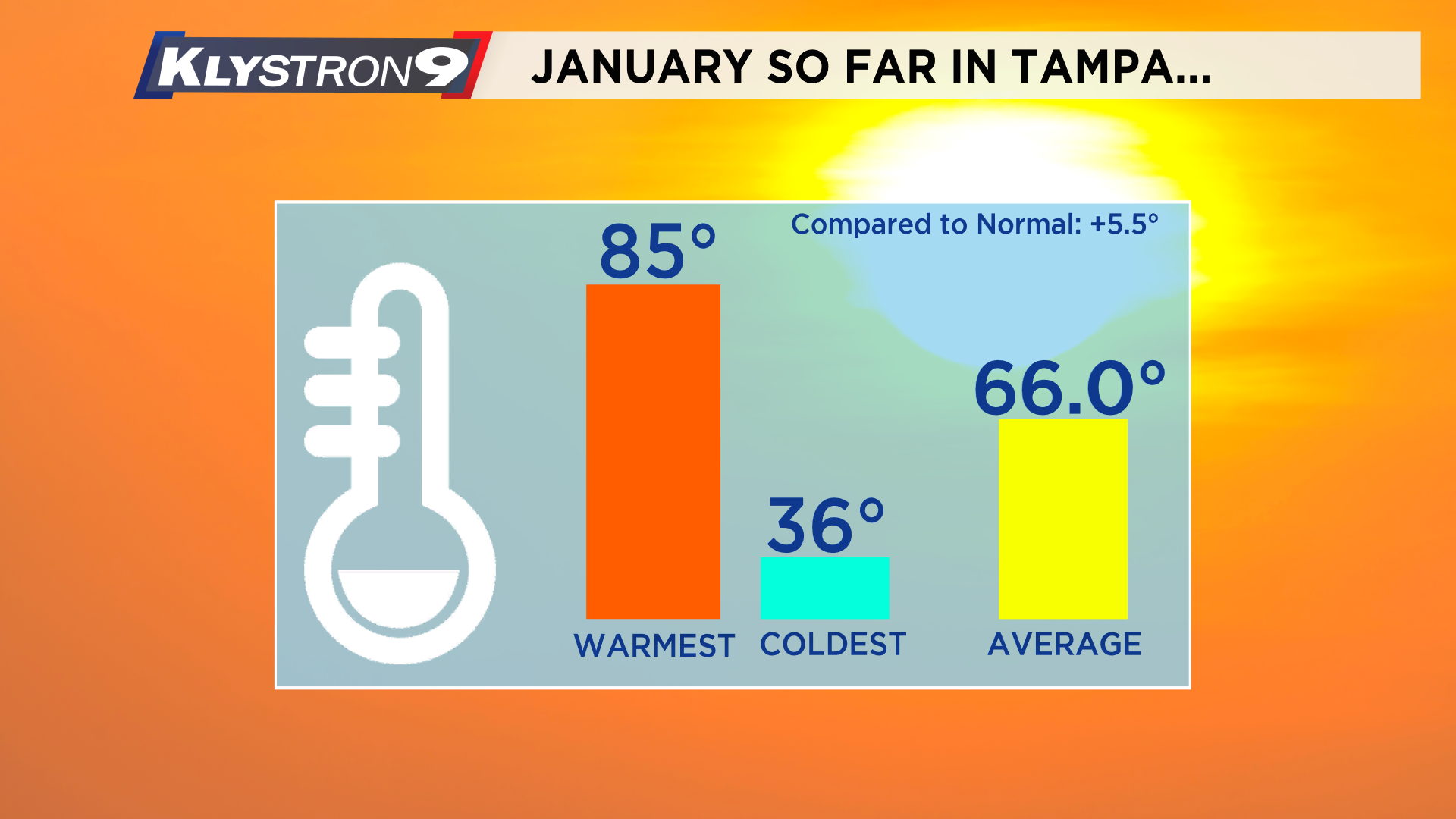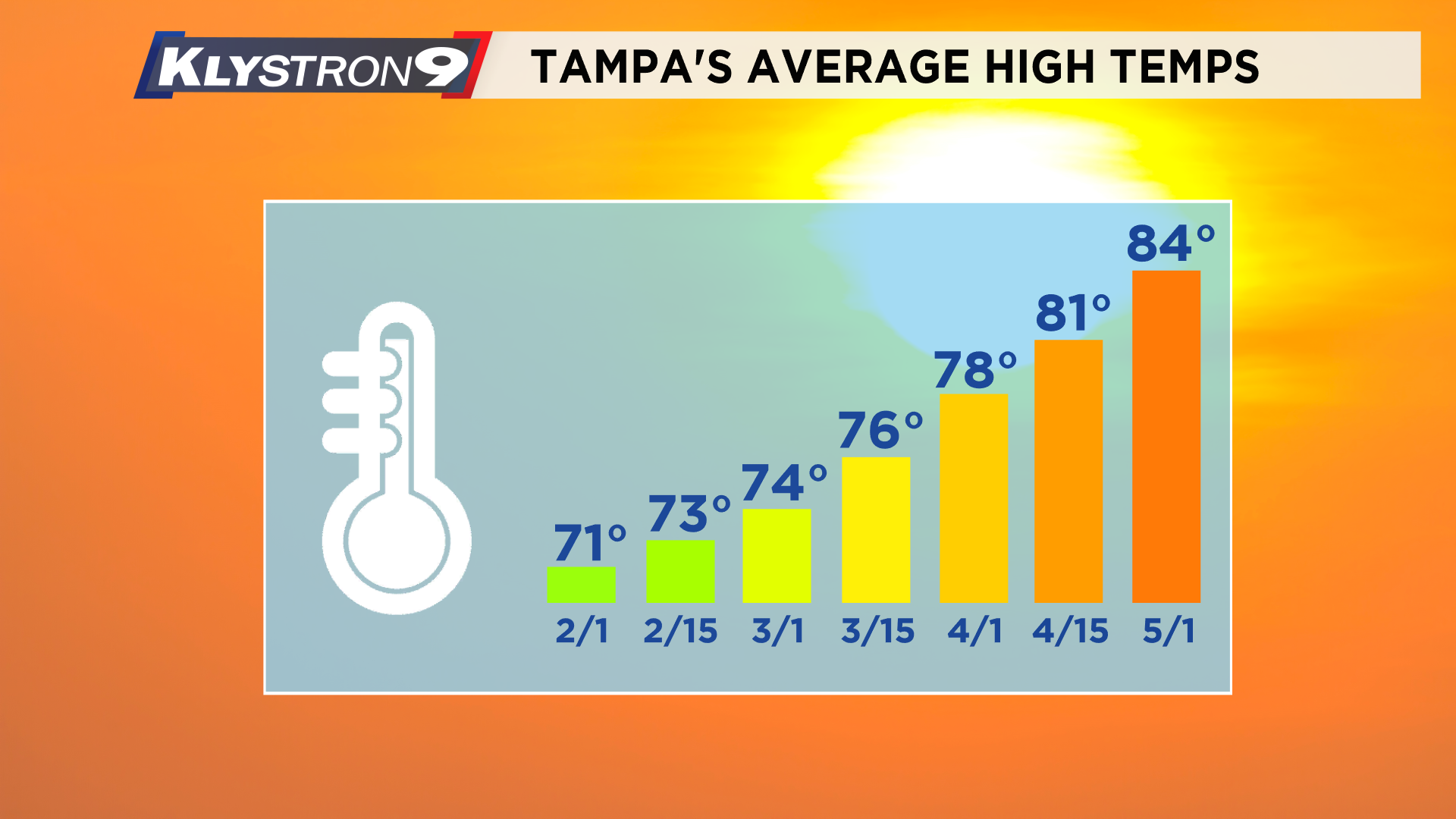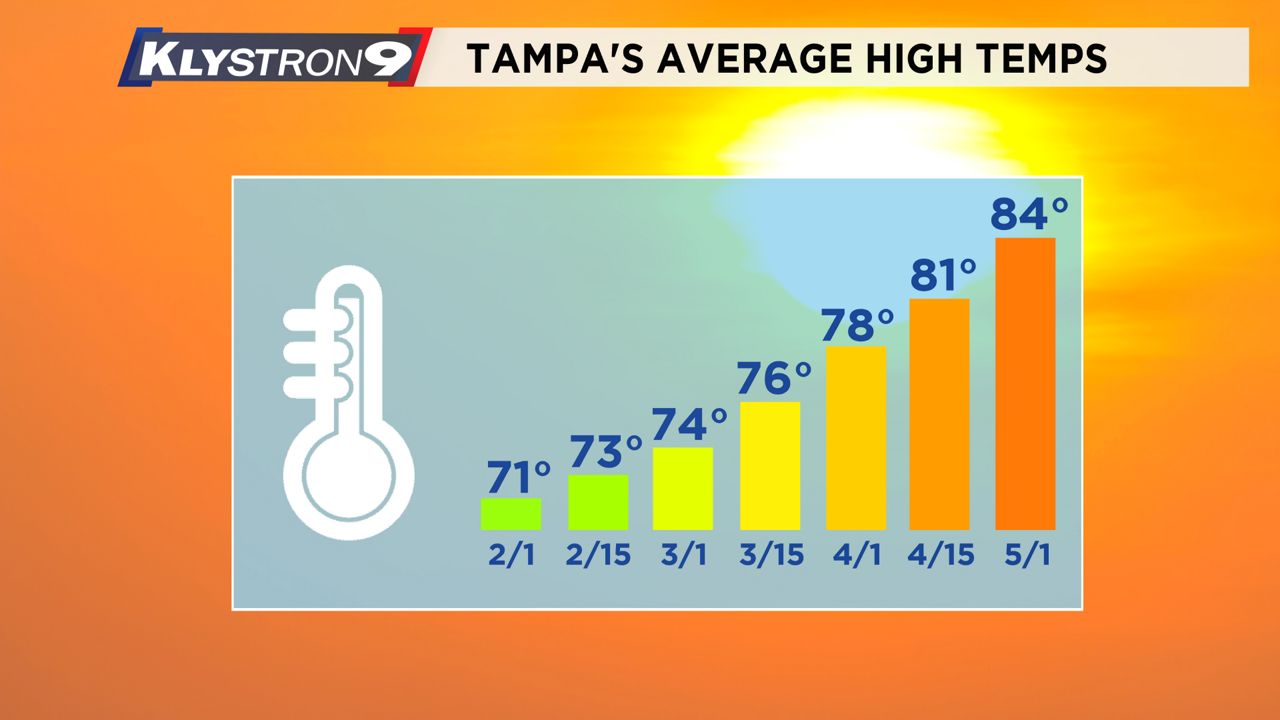TAMPA, Fla. — It couldn’t be more official than a referee with a whistle. Tampa Bay is on the upward swing when it comes to temperatures. This means as we progress through February, it will be harder to bring exceptionally cold air to Tampa Bay.
It’s not impossible to get cold spells into March. Tampa Bay has seen temperatures as low as 29 degrees in March of 1980.
The lowest average high temperature in Tampa occurs in January at a “chilly” 70 degrees. The average high temperature in Tampa will continue to climb through July when Tampa reaches an average of 90 degrees. The winter months are when Tampa experiences large variability with temperatures, largely due to a less humid atmosphere and cooler ocean waters.
The month of January is a prime example. Tampa has had a 49 degree temperature spread with a max temperature of 85 degrees and a minimum temperature of 36 degrees.

Tampa’s average temperature starts to climb slowly through February. By March 1, the average high temperature reaches 74 degrees. By May 1, the average high temperature reaches 84 degrees. Remember, these are only averages. There will be days much hotter and cooler than these averages.

It’s important to note where these averages come from. Climatology is based off of the last 30 years of data, smoothed out over the course of a year. When the average high temperature is graphed from January through December, the graph will look like a bell curve.
If you love the warmth, be thankful you live in this climate. Our temperature variability is nothing compared to other cities, especially those in the Midwest. Let’s take Chicago for an example. The lowest average high for the city this time of year is just 30 degrees, although at times it can be much colder. The average high temperature for Chicago will continue to climb until it reaches 85 degrees in July.
Considering Tampa Bay just reached its “coldest” point of the year, we have it pretty good around here. We will ask this question again when we make it to the dog days of summer.



